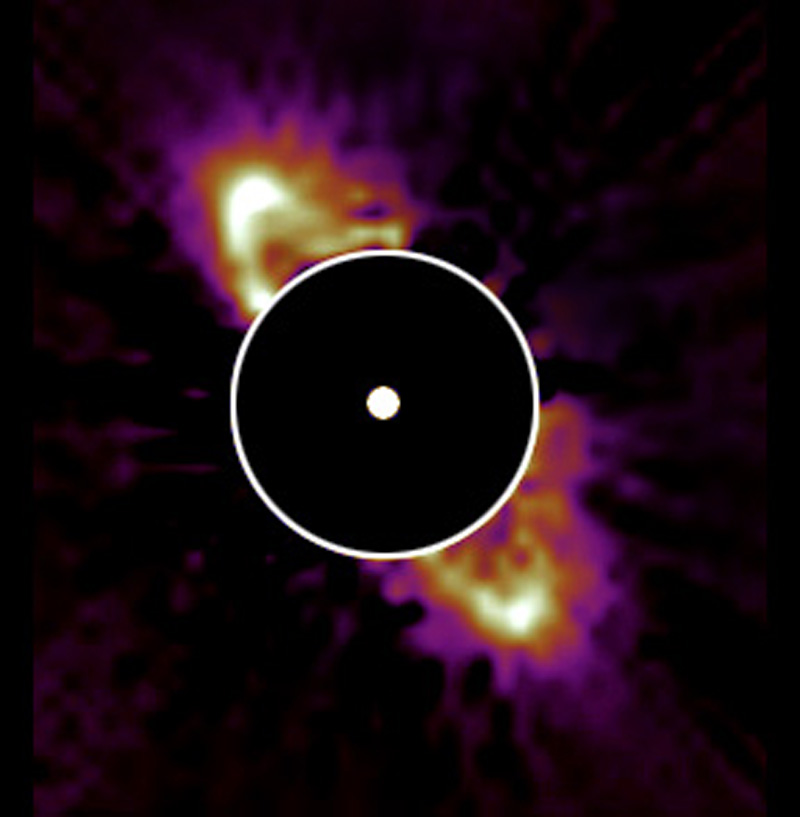
Image credit: Schneider, G., Smith, B.A., Becklin, E.E. et al. 1999, "NICMOS imaging of the HR 4796A Circumstellar Disk," ApJ Letters, pp. L127-L130. Copyright, please do not reproduce without permission from the authors.
HR 4796A at 1.2 microns (J-band)
HD 109573 HR 4796A
SAO 203621 HIP 61498
RA (2000) = 12 36 01.0316
Dec (2000) = -39 52 10.219
SpT = A0V V =
5.78 mag d = 67.1 pc
Proper motion (mas/yr) = -55.92 -24.00
Luminosity = 21 Lsun, Mass = 2.5 Msun
This image of HR 4796A shows the dust disk in
scattered light.
The main observational result is that the
dust disk appears to be
a toroidal ring 70 AU (1") from the star
with characteristic width about 17 AU (0.26"). The system
is inclined 17 degrees away from edge-on, and the position
angle on the sky is 27 degrees east of north.
Most importantly, the very sharp inner and outer edges of the
ring could result from unseen massive objects sweeping away
dust on either side of the ring. HR 4796A has an
outer companion, HR 4796B, that might be responsible for sculpting the
outer edge. However, the inner dust edge could be sculpted
by an unseen planet. A planet at least as large as Neptune
could provide the gravitational mechanism to sweep dust clear of the center,
but the direct detection of such a planet will have to
await future advances in telescopes and instrumentation.
A careful study of this image shows that the northeast side of
the ring (upper left) is slightly brighter than the southwest
side (approximately 5 percent brighter). Wyatt et al. (1999) have
proposed that the orbits of disk particles are influenced by
the combined gravity of HR 4796A, an unseen planetary companion within
the dust ring,
and the stellar companion located outside of the ring
to the southwest (not shown). The net effects are that the
dust ring is not exactly centered on HR 4796A, and that
the number density of dust grains along the circumference
of the ring is not constant. These factors can
make one side of the ring appear brighter and hotter than
the other side because one side contains more grains, and is closer
to the star.
Basic facts about HR 4796A:
1) age is estimated to be between 5 Myr and 11 Myr
2) observed dust grains are approximately 2.5 microns in diameter
3) peak of dust scattered light is at 70 AU northeast-southwest of the star
4) the number density of grains in the central hole is no greater than
3% of the grain number density in the ring
5) young, low mass (M2-M3) binary companion, HR 4796B,
is located to the southwest (PA = 226 degrees)
at a projected distance of 515 AU (7.7").